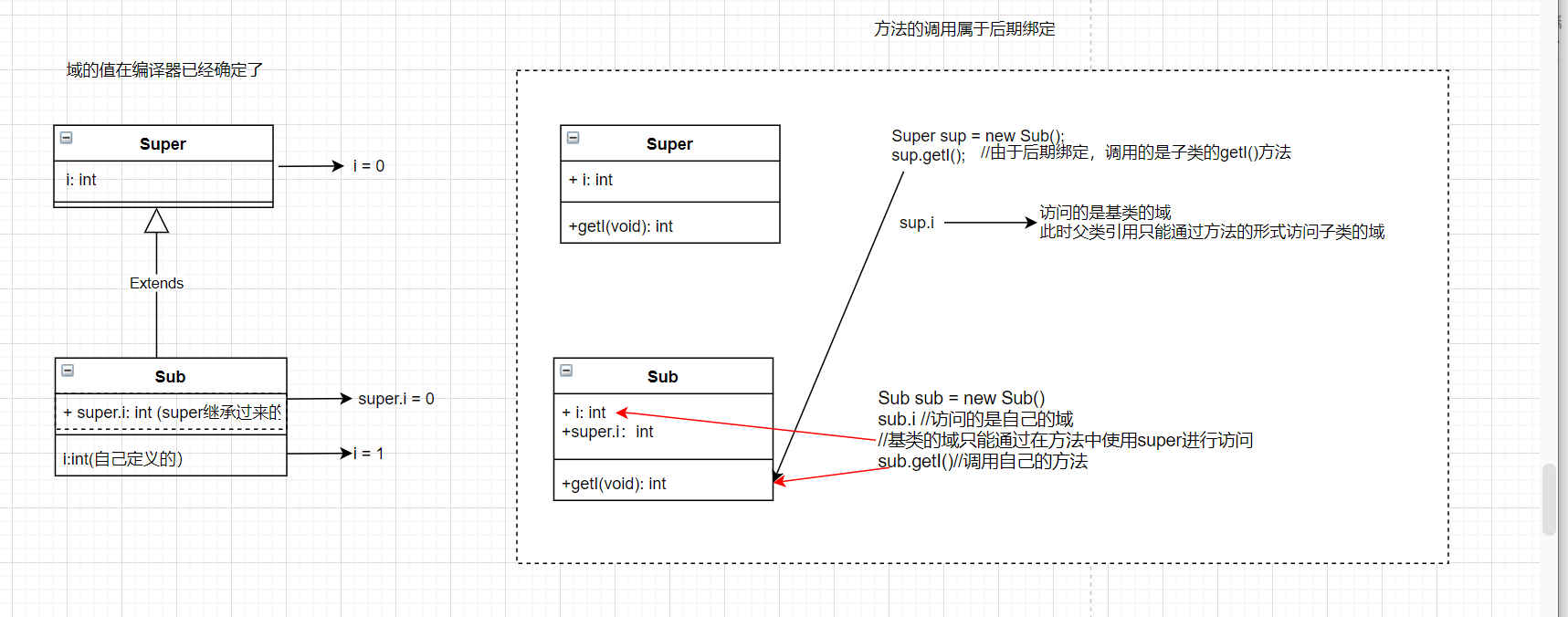动态绑定的概念:
运行时根据对象的类型进行绑定;以便在运行时能判断对象的类型,从而调用正确的方法。
final在大多数情况下对提高性能影响不大:
final可以有效的关闭“动态绑定”告诉编译器不需要对其进行动态绑定
1>熟悉对象工厂的使用,可以根据参数来生成不同的对象,参考以下代码。
public class RandomShapes {private Random rand = new Random(47);public Shape get() {switch(rand.nextInt(3)) {default:case 0: return new Circle();case 1: return new Square();case 2: return new Triangle();}}public Shape[] array(int sz) {Shape[] shapes = new Shape[sz];// Fill up the array with shapes:for(int i = 0; i < shapes.length; i++)shapes[i] = get();return shapes;}}
2>对于多态的理解:
1,编译时,编译器不需要额外的信息来应对接下来的调用;对draw()正确的调用是在运行时通过动态绑定来产生的正确行为。
2,多态是一项让程序员“将改变的事物与未变的事物分离开来的一项重要技术”
3,多态只存在于普通方法中
当Sub对象转型为Super引用时,任何域访问操作都将由编译器解析,因此不存在多态。
class Super{public int i = 0;public int getI() {return i;}}class Sub extends Super{public int i = 1;@Overridepublic int getI() {//System.out.println("execute......");return i;}//i 变量是否会被覆盖public int getSuperI(){return getI();}}public class FieldAccess {public static void main(String[] args) {// 对于域来说 值在编译器都已经定了 方法呢是在运行时候动态绑定的Super sup = new Sub();//System.out.println("sup.i = "+sup.i+" "+"sup.getI ="+sup.getI());Sub sub = new Sub();System.out.println("sub.i = "+sub.i+" "+"sub.getI ="+sub.getI());}}

编码建议因为非private才可以被覆盖,建议在导出类中对于基类的private方法采用不同的命名。

